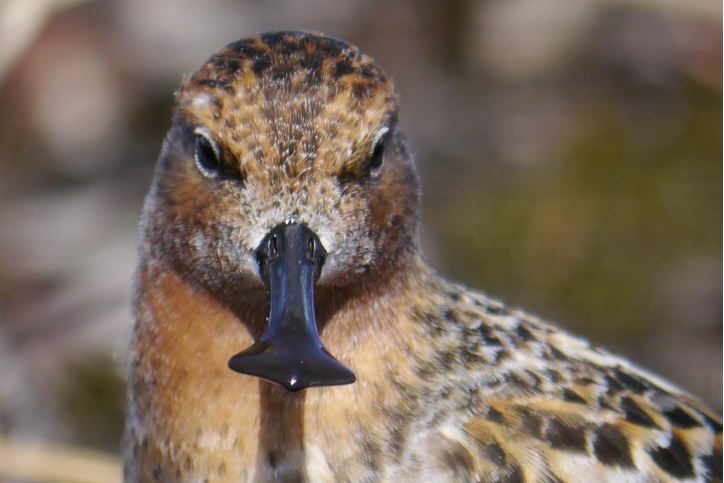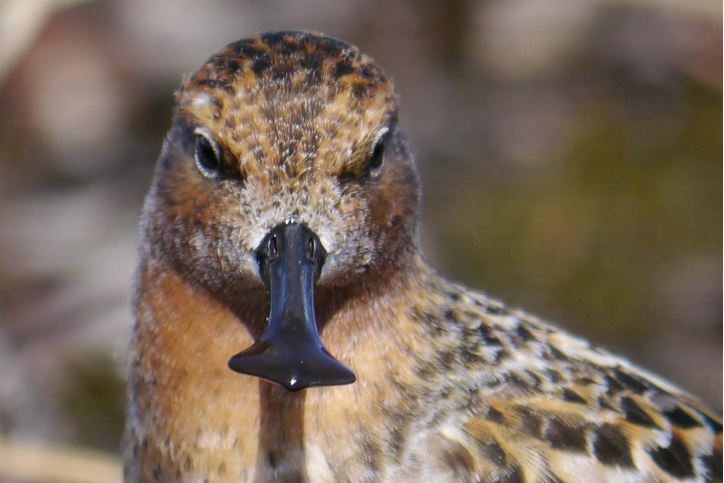Last winter several Danish birdwatchers went to Thailand. Their target species were such birds as Normann’s Greenshank, Great Knot, Asian Dowitcher, Rednecked Stint, Eastern Crowned Warbler, and Siberian Blue Robin. Several of these species are common in Thailand, but since they are rare in Denmark, Danish birders may undertake long-distance birding trips to see them. A few species hold special attraction. This applies to the endangered Gurney’s Pitta and to the critically endangered Spoon-billed Sandpiper. The latter is a small shorebird, a photo of which showing its characteristic bill is featured on the front cover of the December 2012 issue of Birding Asia. This issue also covers the strenuous efforts made to save the population from extinction by collecting eggs in the inaccessible breeding grounds around Meinypil’gyno in Chukotka, Russia for hatching and rearing in Slimbridge, UK. With a total population of around 300 individuals, the birder who manages to “twitch” a Spoon-billed Sandpiper in its winter quarters in Thailand, Myanmar or Bangladesh gets a bang for his buck. The birder who twitches the same bird in its breeding grounds may get an even more exclusive experience, but visits to the breeding grounds may be considered too intrusive (see discussion in Danish here.
Birding is what has been termed a “serious leisure activity”. Birders build up impressive, constantly updated, and mercilessly triangulated bodies of knowledge about bird identification and about where to find birds – but not necessarily about the science of ornithology in general. They share their knowledge and skills by words of mouths, in print, on the internet, and through collective action such as long-distance group tours. While these communities of knowledge and of habitus grow denser year by year, the birds – not the least in Southeast Asia – get fewer. As twitchers from the West extend their birding range, they encounter ever more rare birds on the verge of extinction. Ironically, the birders themselves may be a danger to birds such as the Gurney’s Pitta because some of them may set up hides from where they back-play the Pitta’s call for hours in order to get a good video or photo shot of the bird. Gurney’s Pitta has now disappeared from the sites in Thailand where it used to be seen. Consequently, birders may have to seek it elsewhere in Thailand or go to new and as yet poorly mapped places in Myanmar. Thus, birders from the West – the elderly among whom may feel the shadow of their own death looming larger as they comb hot and humid tidal zones and forest floors for target species – confront rare birds on the verge of extinction both individually and as a species. According to Steven Feld (Sound and Sentiment: Birds, Weeping, Poetics, and Song in Kaluli Expression, 1990), humans may express their sorrow through bird-like song and dance. Birding in Southeast Asia may seem to be a form of adventure tourism, but it may also be a kind of mourning.
There exists a growing literature and several films and documentaries on amateur and professional birders in Europe and North America. My hunch and hope is that the time has come to solicit studies of birding in the East. While there are few Asian birders in the West, there is now an increasing number of both Asian and Western field ornithologists active in the East.
The early birdwatchers venturing into Southeast Asia included such eccentric personalities as Tom Harrison who had observed birds in the UK before trying to apply some of the same methods of observation in his anthropological fieldwork in the New Guinea. He later cofounded Mass-Observation, which became an important social survey organization collecting data about the people in the UK before and during WWII (JM Heimann, The Most Offensive Soul Alive: Tom Harrison and his Remarkable Life, 1997). Today’s birders may wear duller feathers, but contemporary birding offers an opportunity to study how birders in Southeast Asia compete, how they form networks of collaboration, and how locals and outsiders, experts and dudes, amateurs and professionals, old and young, and males and females interact. How does the field-science of birding change as a result of technological innovations such as improved telescopes, digital cameras, mobile phones and the internet in the East? How do local Thais relate to the increasing number of birders who flock to see endangered birds? What are the relations emerging between birders and guides, including local guides commanding great respect? How does birding fit in along the continuum of nature appropriation stretching from hunting wild animals in the jungles to watching cute pandas on TV? And how is birding and other nature-related leisure activities portrayed in the printed and electronic media?
I suggest that such questions be opened for consideration at a panel called “Observing Nature in Thailand: The Social History of Birders and Other Naturalists” at the Thai Studies Conference in Australia in April 2014. I hope this call for papers will flush out some interest in the study of birding with Thai characteristics.
Stig Toft Madsen is a Senior Research Fellow with the NIAS-Nordic Institute of Asian Studies, Copenhagen
 Facebook
Facebook  Twitter
Twitter  Soundcloud
Soundcloud  Youtube
Youtube  Rss
Rss 
